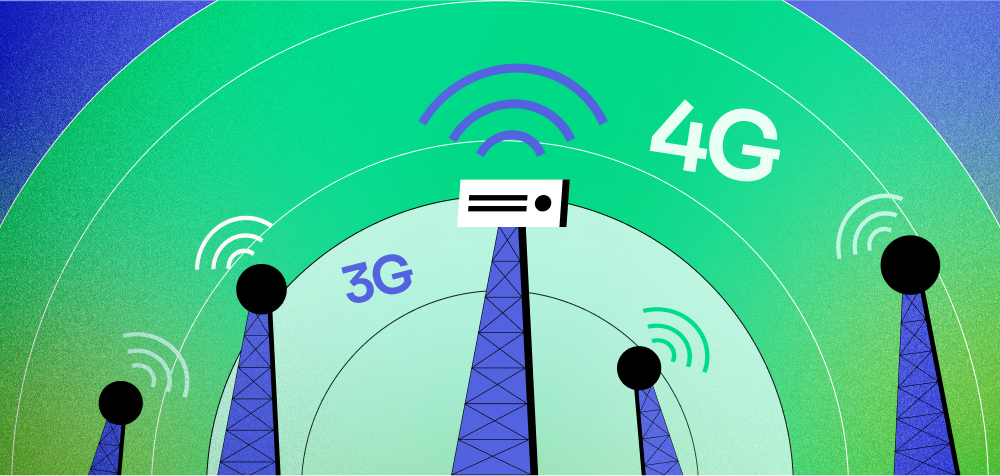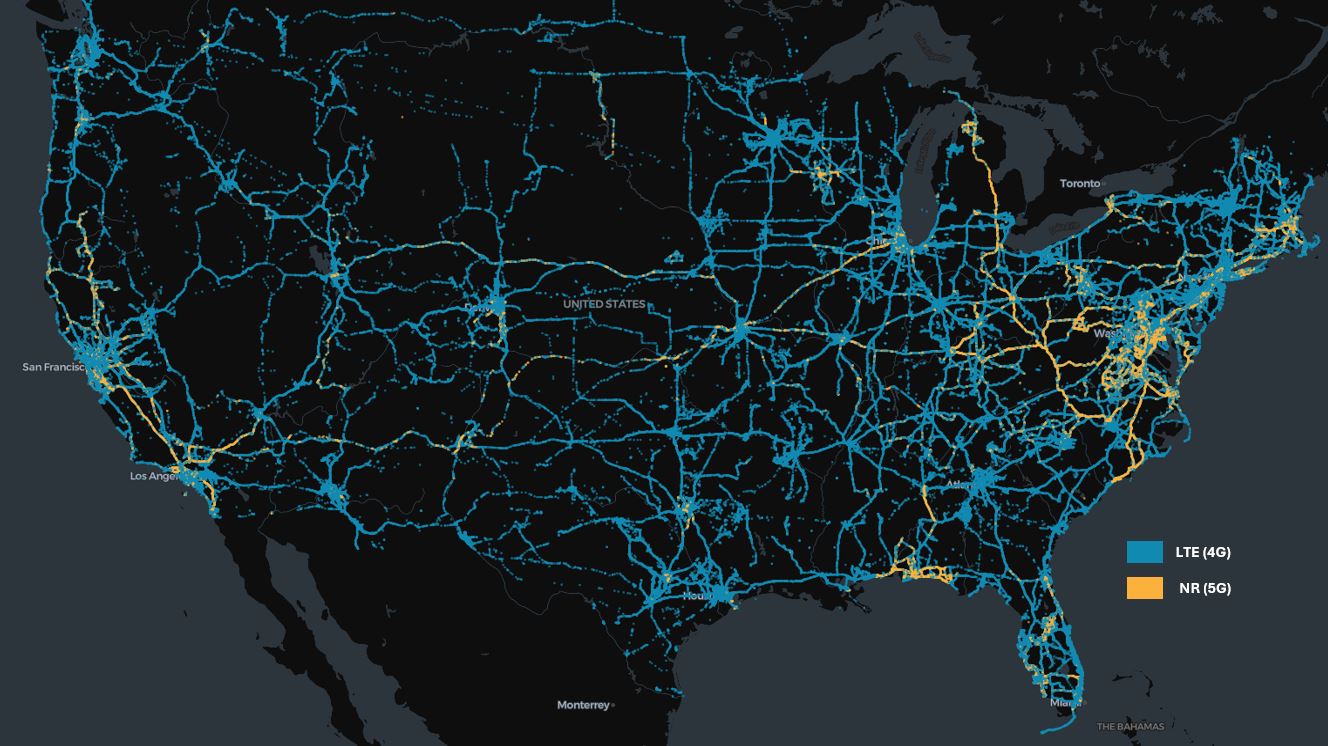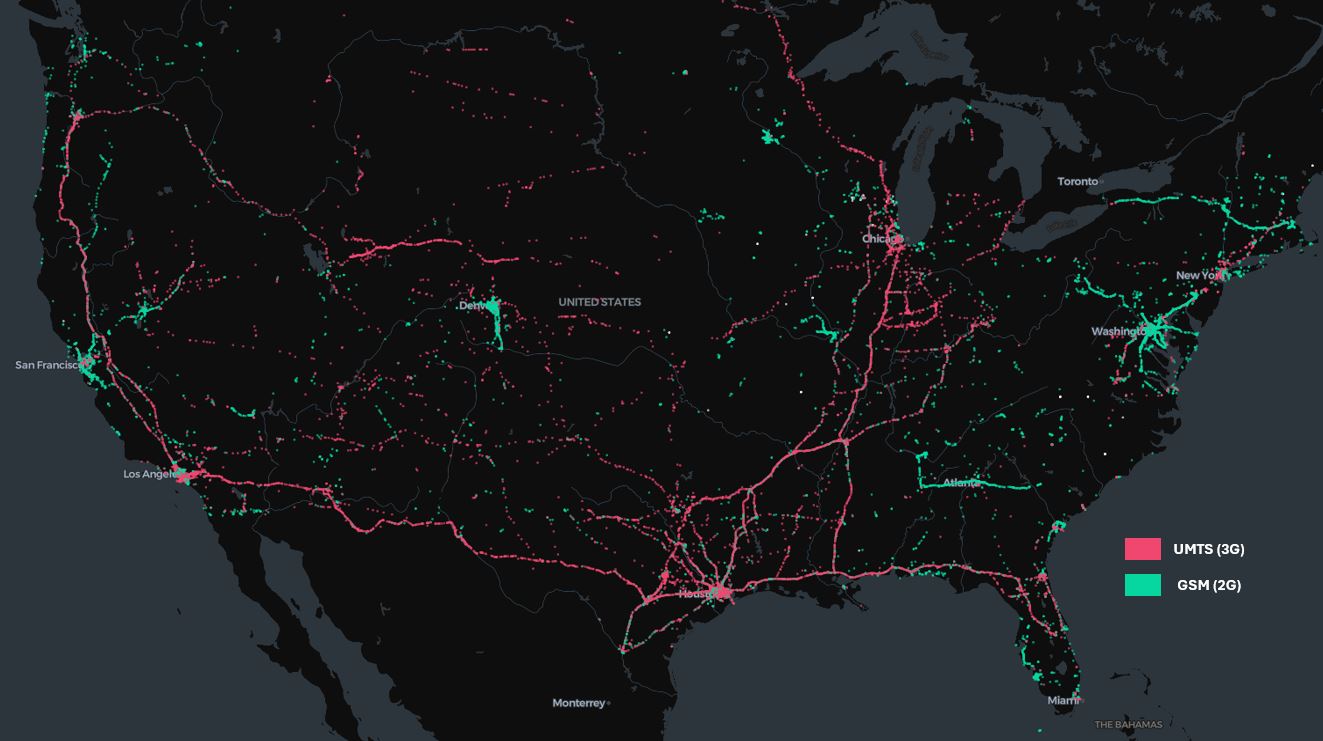Wyoming, Louisiana, and Texas have the highest concentration of 3G mobile antennas in the country, and remain one of the last remaining states where you can find a 3G connection, according to a new data analysis from Start.io.
For this analysis, Start.io studied antenna data from across the United States, mapping out the locations of antennas where speeds were fastest (4G and 5G), and the slowest (2G and 3G).
Not surprisingly, 4G and 5G antennas are more common along interstate freeways, cities, and densely populated suburbs, while 2G and 3G antennas are more common in rural areas.
In Wyoming, 17.5 percent of all mobile antennas in the state are providing 3G connections. Just 3.6 percent of mobile antennas in Wyoming provide 5G connections.
Quick note: A single mobile phone tower can support multiple antennas, providing, for example, 3G, 4G, and 5G connections, depending on the type of device connecting to the tower.
For the purposes of this analysis, Start.io studied all the mobile antennas in each state in September 2024, and expressed the relative market share of each connection type as a percentage.
The 5 states with the highest percentage of 3G antennas:
| State | % of 3G mobile antennas |
| Wyoming | 17.5% |
| Louisiana | 11.04% |
| Texas | 9.04% |
| Mississippi | 7.41% |
| Arkansas | 7.01% |
Source: Start.io analysis
On the flip side, Virginia has the highest percentage of 5G antennas of any U.S. state. A little over 25 percent of mobile antennas in Virginia provide 5G connectivity—more than twice the national average of 11 percent.
The 5 states with the highest percentage of 5G antennas:
| State | % of 5G mobile antennas |
| Virginia | 25.27% |
| West Virginia | 21.42% |
| Ohio | 17.48% |
| Maryland | 16.09% |
| Alabama | 15.99% |
Source: Start.io analysis
Two U.S. states, Alaska and Maine, have a limited number of 5G-capable mobile antennas. Both states are largely rural, with no major cities by American standards. Anchorage is home to around 280,000 people, while Portland, Maine has around 70,000 residents.
Outside of densely populated cities and suburbs, the map of high-speed antennas largely follows America’s interstate freeway system.
Source: Start.io analysis
The map of 2G and 3G mobile antennas is more scattered, and also largely follows America’s interstate freeway system.
Source: Start.io analysis
Start.io delivers hundreds of millions of ads to more than 500,000 active mobile apps every day. Where it’s allowed, Start.io collects first-party mobile data signals, such as connectivity speeds, when delivering ads. Start.io uses this information to help its customers better target their ads. Learn more about Start.io’s first-party data capabilities at the Consumer and Audiences Hub.





